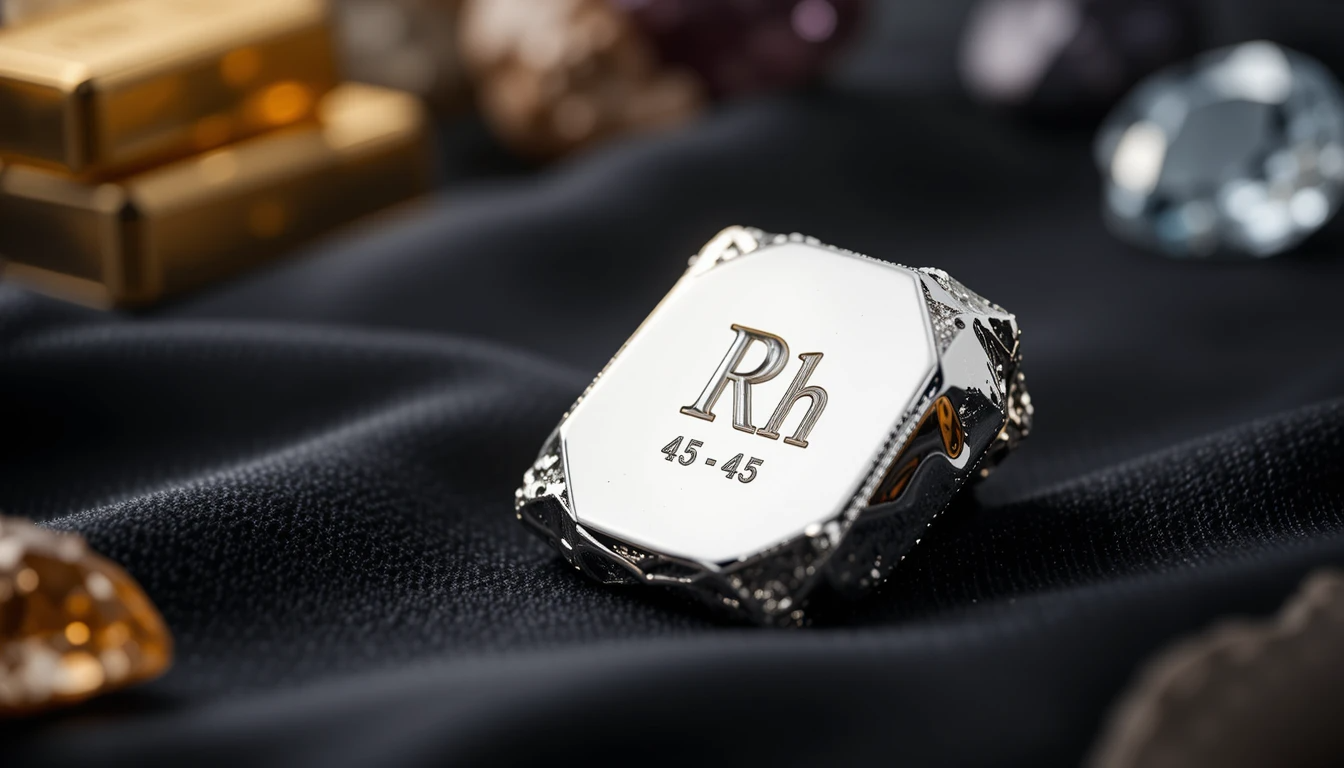What is Rhodium: The Rare Precious Metal
Rhodium is a rare, silvery-white metal that belongs to the platinum group elements (PGEs). Known for its high reflectivity, resistance to corrosion, and extreme rarity, rhodium is one of the most valuable precious metals on Earth. It plays an essential role in numerous industrial applications, particularly in catalytic converters for vehicles, and is increasingly used in high-end jewelry and electronics. This article explores rhodium’s properties, history, uses, market value, and environmental and economic implications.
What is Rhodium? Origins and Discovery
Rhodium was discovered in 1803 by English chemist William Hyde Wollaston shortly after he isolated palladium. He found rhodium while analyzing crude platinum ore obtained from South America. Wollaston named it after the Greek word “rhodon,” meaning rose, due to the rose-colored salts formed during the refining process.
It is classified as a transition metal and shares many characteristics with other PGEs like platinum, palladium, and ruthenium. Though discovered over two centuries ago, its practical applications only became prominent in the 20th century, particularly with the rise of the automotive industry.
Physical and Chemical Properties of Rhodium

Rhodium has several distinct characteristics:
- Atomic Number: 45
- Symbol: Rh
- Density: 12.41 g/cm³
- Melting Point: 1,964°C (3,567°F)
- Boiling Point: 3,695°C (6,683°F)
- Color: Silvery-white metallic
- Corrosion Resistance: Exceptionally high, especially in acids and oxidizing environments
Its resistance to corrosion and tarnish makes rhodium highly desirable in electroplating, especially for jewelry to provide a mirror-like finish.
Global Supply and Mining of Rhodium
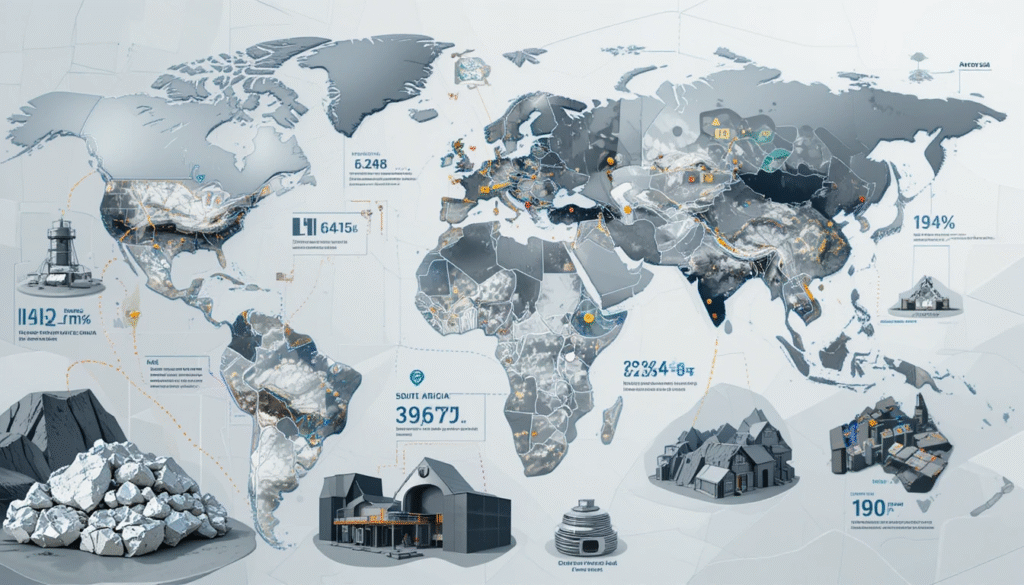
Rhodium is extraordinarily rare in the Earth’s crust, with an estimated abundance of only 0.000037 parts per million. It is usually obtained as a byproduct during the mining and refining of platinum and nickel ores.
Major Producers:
- South Africa: Over 80% of the global rhodium supply comes from South African mines.
- Russia: A significant but smaller contributor.
- Canada and the United States: Provide limited production.
The limited geographic concentration of rhodium production has made the supply chain highly vulnerable to political instability and labor disputes, especially in South Africa.
Uses and Applications of Rhodium
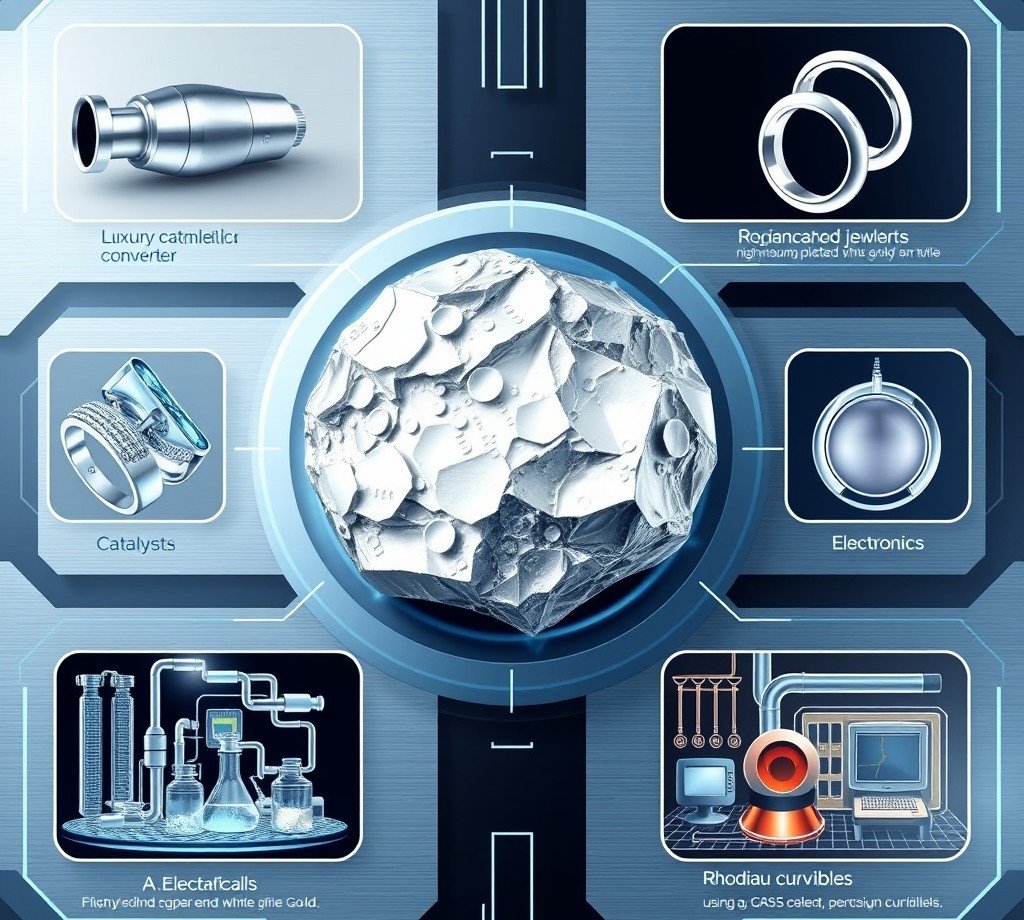
1. Catalytic Converters
The largest application of rhodium is in catalytic converters for automobiles. It helps reduce harmful nitrogen oxide emissions by converting them into less harmful substances.
2. Jewelry and Electroplating
Rhodium is used to coat white gold, platinum, and silver jewelry. The result is a reflective, bright white finish that resists scratching and tarnishing.
3. Electrical Contacts
Thanks to its conductivity and durability, rhodium is used in high-performance electrical contacts and connectors, especially in aerospace and telecommunications.
4. Mirrors and Optical Instruments
Because of its high reflectivity, rhodium coatings are used in scientific mirrors and instruments.
5. Chemical Industry Catalysts
Rhodium-based catalysts are vital in producing nitric acid, acetic acid, and hydrogenation reactions.
Rhodium vs. Other Precious Metals
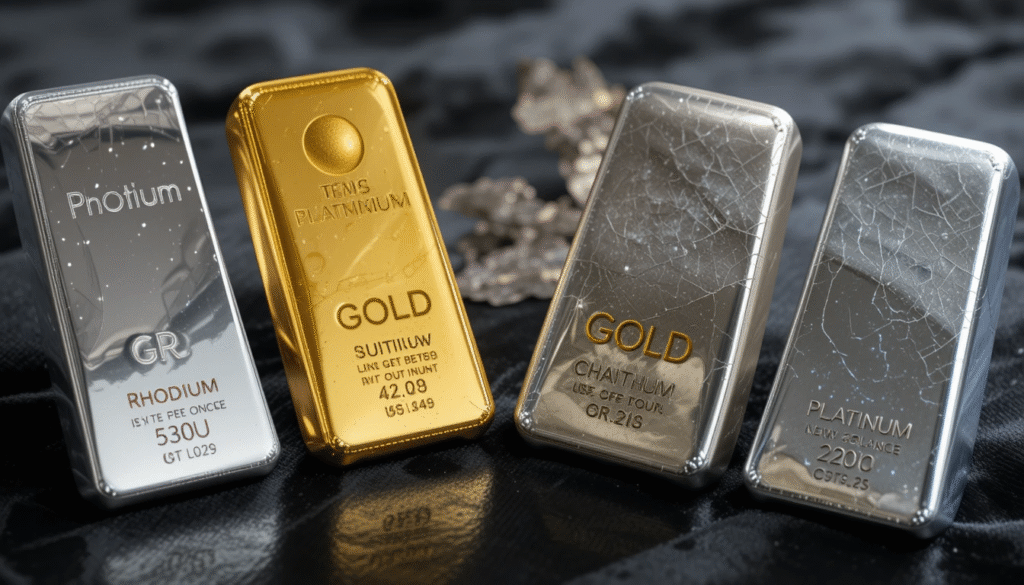
Rhodium often garners comparisons to other metals in the PGE family:
| Property | Rhodium | Platinum | Palladium |
|---|---|---|---|
| Rarity | Rarest | Moderate | Less rare |
| Price per Ounce | Highest | Moderate | Lower |
| Corrosion Resistance | Excellent | Excellent | Good |
| Main Use | Catalysts | Jewelry, Auto | Catalysts, Electronics |
Rhodium is far rarer than both platinum and palladium and commands a significantly higher market price. However, it is more brittle, making it less suitable for crafting full jewelry pieces.
Market Value and Investment Potential

Historical Price Trends
Rhodium’s price is highly volatile. In the early 2000s, it surged past $10,000 per ounce, and again in 2021, it reached an all-time high of nearly $30,000 per ounce due to surging demand and limited supply.
Investment Considerations:
- Pros:
- Extremely rare
- High demand from automakers
- Limited supply chain
- Cons:
- High volatility
- Difficult to acquire physically
- Limited availability in ETFs or public trading markets
Investors often use rhodium as a diversification tool, especially when platinum and palladium prices are unstable.
Environmental and Geopolitical Impact

The environmental impact of rhodium mining is significant. Since it is extracted alongside other PGEs, the energy and resource consumption is high. Water usage, tailings, and emissions are environmental challenges.
Furthermore, the concentration of production in politically unstable areas like South Africa raises geopolitical risks. Labor strikes, regulatory shifts, and infrastructure issues can disrupt global supply chains and spike prices overnight.
The Future of Rhodium in Clean Technology
With global efforts to reduce emissions and shift toward green technology, rhodium remains essential in automotive catalysts. However, electric vehicles (EVs), which do not use catalytic converters, may eventually reduce demand.
Still, new opportunities are emerging:
- Hydrogen fuel cells: Rhodium may play a role in next-generation clean energy devices.
- Water purification: Experimental use in advanced filtration systems.
- Recyclable catalysts: Research is being done to improve rhodium recycling efficiency.
Rhodium in Popular Culture and Industry Trends
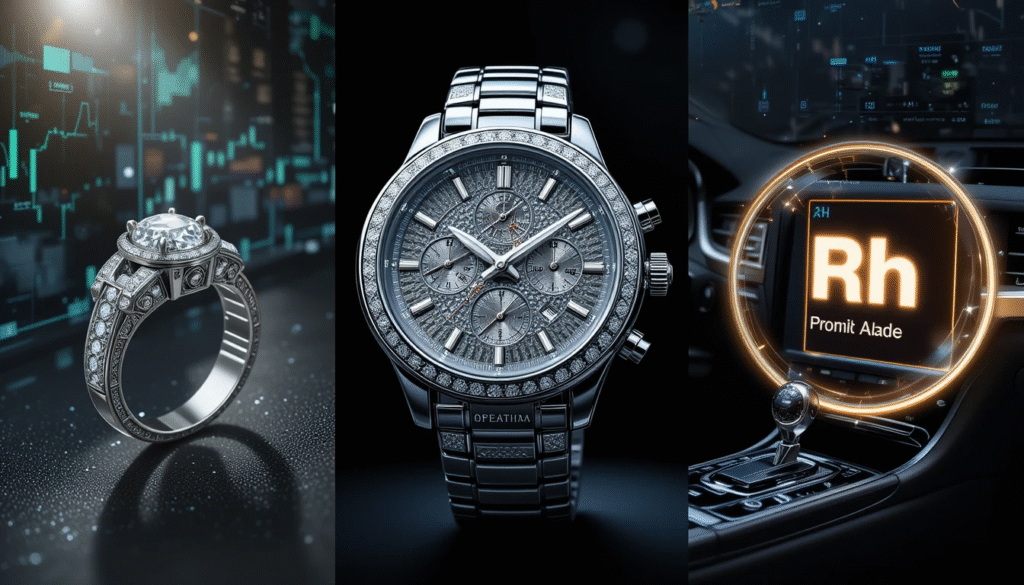
Due to its exclusivity, rhodium is sometimes featured in pop culture and luxury branding. For example, the term “rhodium-plated” is associated with high-end jewelry, premium watch dials, and even luxury car trim.
Recent years have seen rising consumer awareness and interest in rare elements, especially those that contribute to green technology. As a result, the market for rhodium is no longer limited to industrial buyers—collectors, investors, and tech companies are paying attention.
Conclusion
Rhodium is a fascinating, ultra-rare metal that plays a crucial role in modern industries, particularly automotive emissions control. Though costly and difficult to obtain, its unique properties—extreme corrosion resistance, reflectivity, and catalytic behavior—make it indispensable in various technological applications. Whether you’re an investor, scientist, or environmentally conscious consumer, understanding rhodium’s value, uses, and challenges gives insight into one of Earth’s most exclusive and vital elements.
FAQ’s
1. Is rhodium jewelry good quality?
Yes, rhodium jewelry is considered high quality due to its brilliant shine and corrosion resistance. It also increases the durability of underlying metals like silver or white gold.
2. Is rhodium more valuable than gold?
Yes, rhodium is generally more valuable than gold because it is rarer and has significant industrial demand. Its price often fluctuates above gold due to limited supply.
3. What does rhodium do to the body?
Rhodium is non-toxic and generally safe for the body when used in jewelry. It’s hypoallergenic, making it ideal for people with metal sensitivities.
4. What is rhodium used for?
Rhodium is used mainly in catalytic converters, jewelry plating, and electronics. Its resistance to corrosion and heat makes it valuable in high-performance applications.
5. What is better, rhodium or sterling silver?
Rhodium is better for plating due to its hardness and shine, while sterling silver is preferred for full-metal pieces. Rhodium-plated silver offers the benefits of both.
6. Does rhodium turn green?
No, rhodium does not turn green as it doesn’t oxidize or tarnish. This makes it an excellent coating for jewelry to prevent discoloration.
